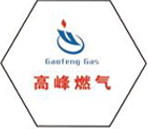
Nov . 01, 2024 13:51
Back to list
Natural Gas Pressure Regulation Valve for Efficient Flow Control in Distribution Systems
Understanding Natural Gas Pressure Reducing Valves An Essential Component for Safe and Efficient Gas Distribution
Natural gas plays a pivotal role in our everyday lives, powering everything from heating systems and kitchens to industrial applications. However, the safe and efficient utilization of natural gas heavily relies on the presence of pressure reducing valves (PRVs). These vital components regulate the high-pressure gas from the supply line to a lower, safe pressure that is suitable for use in residential and commercial applications.
A natural gas pressure reducing valve is designed to control the pressure of gas flowing through pipelines. When natural gas is extracted and transported, it is under extremely high pressure, which, if not managed correctly, can pose serious safety risks, including explosions or pipeline ruptures. The PRV ensures that the gas is delivered at a consistent, manageable pressure, which is crucial for both safety and equipment longevity.
One of the key functions of a PRV is to maintain the outlet pressure irrespective of changes in the inlet pressure. This stability ensures that appliances receive a constant supply of gas, allowing them to operate efficiently. Many natural gas appliances are designed to function optimally at specific pressure levels; thus, a malfunctioning PRV can lead to performance issues, inefficient operation, or even damage to the appliances.
natural gas pressure reducing valve

Most pressure reducing valves operate on a simple principle the valve opens or closes in response to changes in gas pressure. Inside the valve, a spring-loaded mechanism plays a critical role. When the gas pressure exceeds the set level, the spring compresses, and the valve opens to allow gas to flow, decreasing the pressure downstream. Conversely, if the pressure falls below the set level, the spring pushes the valve to close partially, restricting the gas flow to maintain the desired outlet pressure.
Installation and maintenance of PRVs are crucial for their efficiency and effectiveness. It is vital that they are placed correctly in the pipeline system, typically near the entry point into a facility. Regular inspection and maintenance are also necessary to ensure that they are functioning correctly. Over time, pressure reducing valves can accumulate debris or wear down, which could affect their performance. Routine checks can prevent unexpected failures and ensure a consistent supply of gas.
Moreover, advancements in technology have led to the development of smart pressure reducing valves equipped with sensors and electronic controls. These modern systems can provide real-time data on pressure levels, alerting operators to any abnormalities, which enhances both safety and efficiency within gas distribution systems.
In conclusion, natural gas pressure reducing valves are indispensable components in the safe orchestration of natural gas services. By regulating pressure, they enhance the efficiency and safety of gas distribution systems, ensuring that both residential and commercial customers can enjoy the benefits of natural gas without the associated risks of high-pressure supply. As technology continues to evolve, the capabilities of these valves are likely to expand, further bolstering their role in the natural gas industry.
Latest news
-
Safety Valve Spring-Loaded Design Overpressure ProtectionNewsJul.25,2025
-
Precision Voltage Regulator AC5 Accuracy Grade PerformanceNewsJul.25,2025
-
Natural Gas Pressure Regulating Skid Industrial Pipeline ApplicationsNewsJul.25,2025
-
Natural Gas Filter Stainless Steel Mesh Element DesignNewsJul.25,2025
-
Gas Pressure Regulator Valve Direct-Acting Spring-Loaded DesignNewsJul.25,2025
-
Decompression Equipment Multi-Stage Heat Exchange System DesignNewsJul.25,2025

